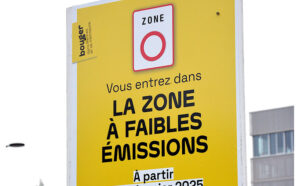A 2020 report, commissioned by the GLA and undertaken by University of Leeds, provided an assessment of consumption-based emissions for the Greater London area. Following this, London Councils and ReLondon asked the same university to conduct an analysis of consumption-based emissions across individual boroughs between 2001 – 2018, to provide an overview of trends across the last 20 years.
Consumption-based emissions include the total impact of goods and services, taking into account the entire supply chain and manufacturing processes of goods at the point of consumption. As such they take into account the overall impact of a community’s lifestyles.
Dr Anne Owen, University of Leeds, explains: ‘A household consumption-based account (HCBA) is the quantity of greenhouse gas emissions associated with the production of all the goods and services a household purchases in one year. The household consumption account includes both domestic emissions and emissions released abroad that are part of the product’s supply chain.’
The report showed that between 2001 and 2018, consumption-based emissions across London fell by 27% and that there was a narrowing of the gap between the worst performing boroughs and the best.
The best performing borough in terms of reducing its total HCBA was Newham with a reduction of around 44%, while Kensington & Chelsea saw the greatest per capita fall.
In every borough, the item with the largest impact is transport, followed by housing and power, then food and drink. Overall, the wealthier areas have the largest impacts impacts due to expenditure on items such as clothing, air travel and recreation.
The good news from these figures is that C40 Cities placed typical emissions of C40 cities in Europe, North America, and High-Income Asia at between 13 and 20 tonnes per capita and even London’s worst performing borough – the City of London – comes under that range at 11 tonnes. Newham has per capita emissions of just 6 tonnes.
The bad news is that the pace of reduction is not fast enough to meet the target of reducing consumption emissions by two thirds by 2030.
Mayor Philip Glanville, Chair of London Councils’ Transport and Environment Committee said: ‘As a leading global city, London has a huge responsibility for the impact of emissions we produce directly, but we must go further than this and consider the environmental impacts of the goods and services that we consume which are produced outside of the city.
‘This is the clearest picture we have ever had of London’s impact on the environment. While it is positive that consumption emissions have reduced, we need to work quickly to fully understand consumption within London and how local leaders can work with Londoners to transition to a more sustainable way of life.’
Wayne Hubbard, CEO of ReLondon, said: ‘Understanding and measuring consumption and its carbon impact is a vital piece of the jigsaw in tackling the climate crisis – particularly in a city like London which imports so many of its products and services, and has such a dense population. So this piece of research is essential in helping us understand which kinds of ‘stuff’ create the most consumption-based emissions and where; it fills an important data gap at a local level which will help London boroughs take targeted action to reduce consumption-based emissions.’
Photo: Adrian Balasoiu
















Leave a Reply